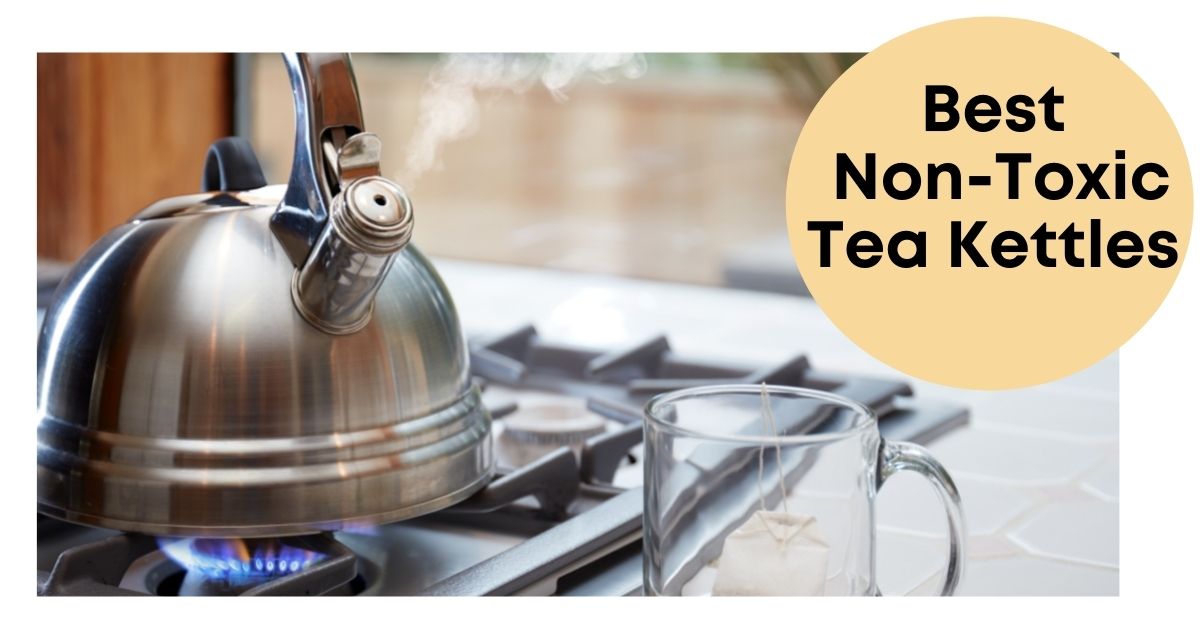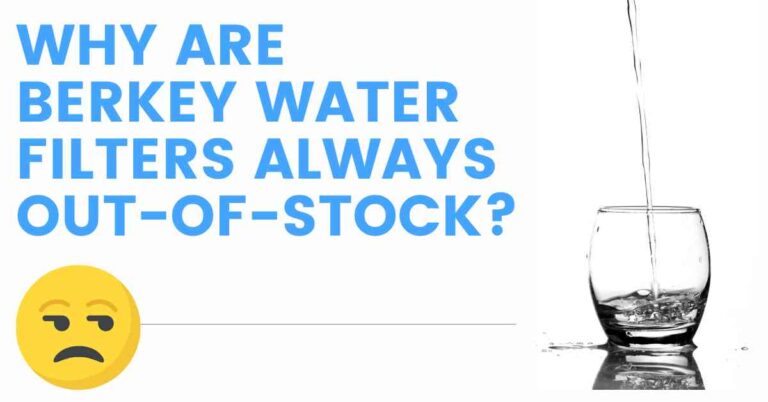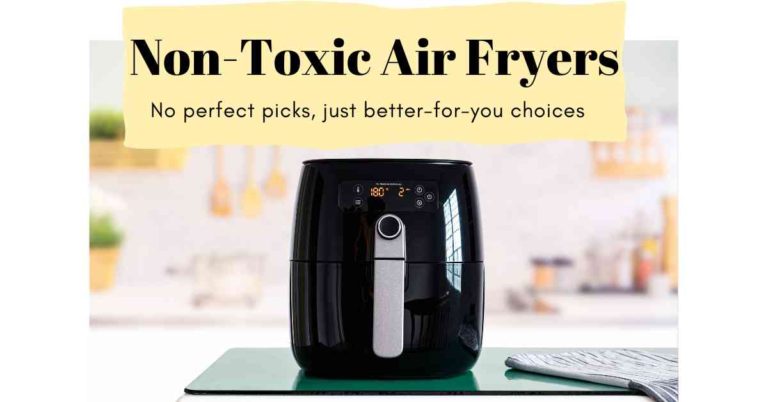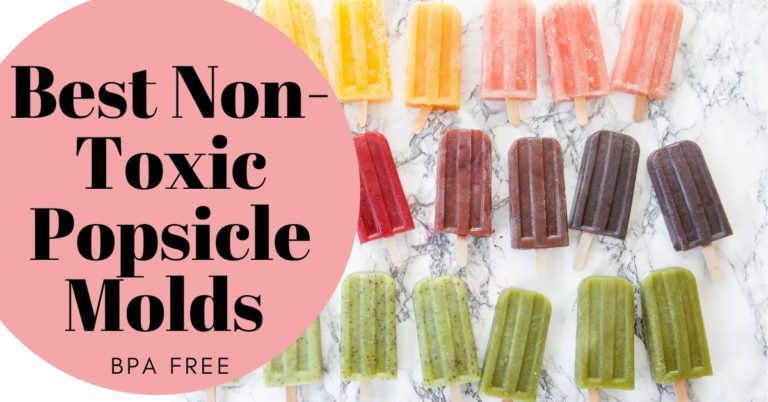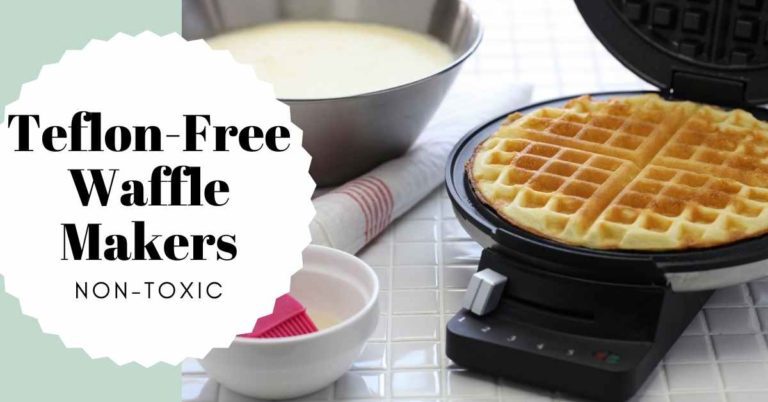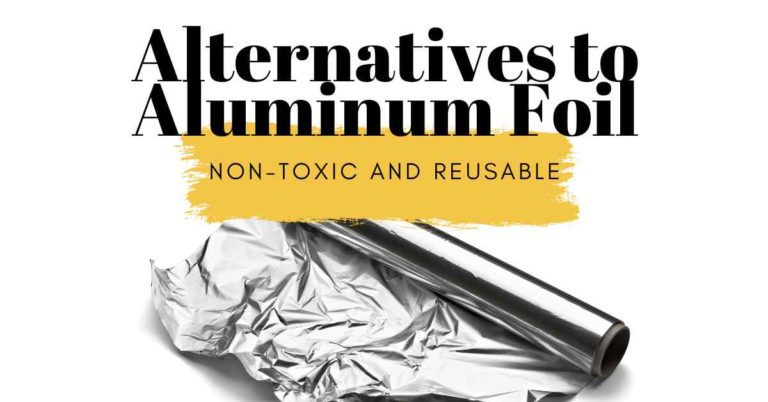Best Non-Toxic Tea Kettles
This post contains affiliate links, which means I receive a small commission, at no extra cost to you, if you make a purchase using this link. Please see my disclaimer for more details. Your purchase helps support my work in bringing you information about non-toxic living.
Tis the season to get warm and cozy! The weather is slowly turning cooler in my neck of the woods and I love me some hot beverages! I’m an avid herbal tea, hot chocolate, golden milk, hot cider, and hot tottie drinker. To warm these lovely beverages I use a tea kettle. Mine has seen better days so I’m in the market for the best non-toxic tea kettle. Let the research begin!
I wanted to ensure I purchased a high quality option with materials that wouldn’t leach unwanted chemicals into my tea. So continue reading below to find the different kettle types, materials to avoid, and the best non-toxic tea kettles.
If you want to skip ahead, here’s a sneak peak at the top non-toxic tea kettle picks:
What is a tea kettle?
Let’s start with the basics. A tea kettle is a pot used to boil water, and usually has a spout and handle. There are stove top kettles and electric tea kettles. This should not be confused with a teapot, which is a pot used to steep the tea leaves.
Should I get a stovetop tea kettle or electric tea kettle?
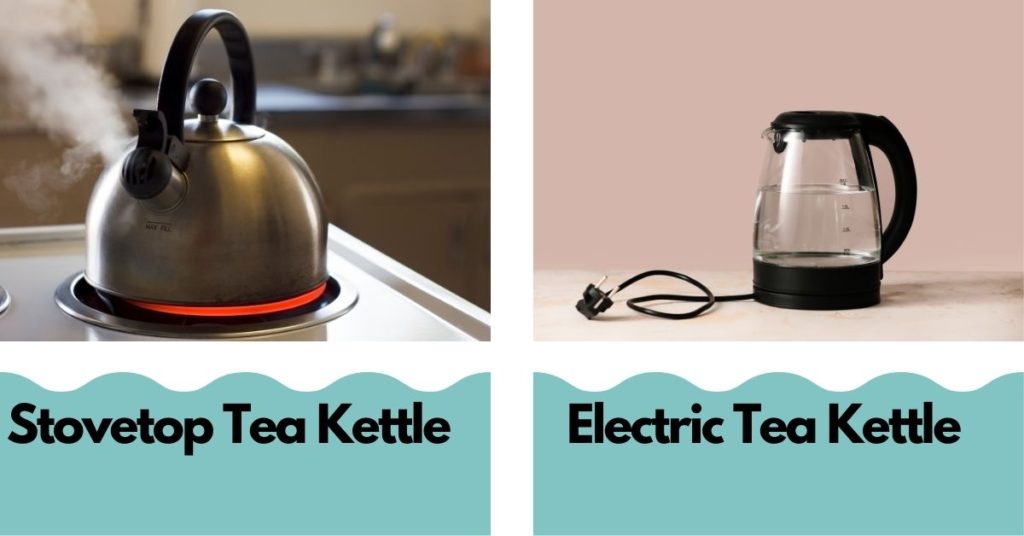
Electric Tea Kettles
Electric tea kettles are plugged into a power source to boil water. Here are the main features of electric tea kettles:
- Automatic Shut-off once a certain temperature is reached
- Quick to boil water (100-300 seconds)
- Variety of styles, sizes, and colors to fit your needs
- Maybe Portable (some have USB chargers if you were camping without a plug-in)
- Common materials used: Plastic, stainless steel, glass
Stovetop Tea Kettles
Stovetop tea kettles sit on the top of electric and gas stoves, or open flame to boil water. Here’s how they compare to electric kettles:
- More durable
- Takes a bit longer to boil water (500 seconds)
- Needs to be monitored so it doesn’t boil over (some have a whistle to alert you when boil reached)
- Portable (just need an open flame, no electricity required)
- Also comes in a variety of sizes, styles, and colors to fit your needs
- Common materials used: Stainless steel, enamel, glass, ceramic
Is it better to use a microwave or tea kettle to heat water?
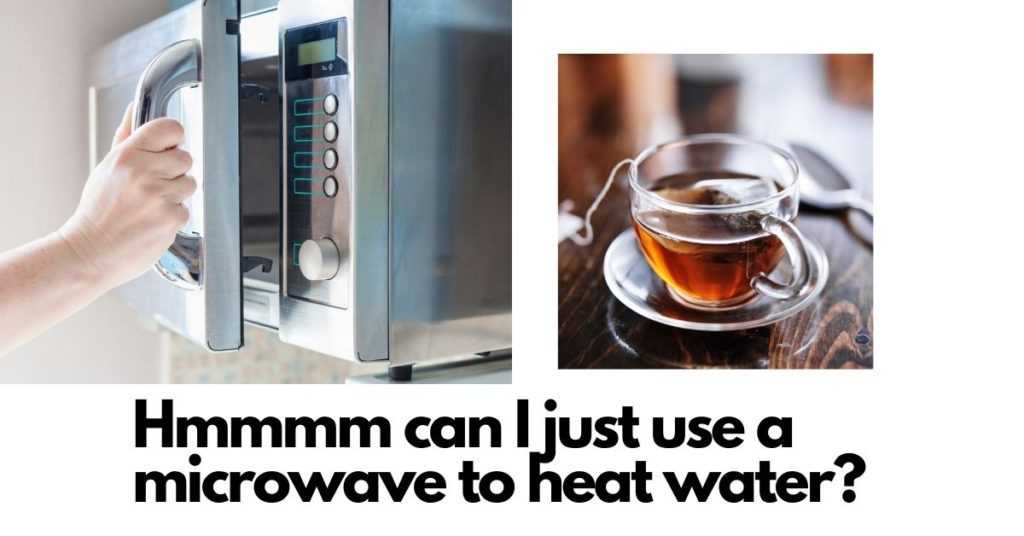
I frequently use the microwave to heat up water, and I’m wondering what the difference is between using a microwave vs a tea kettle. After doing some research there are a few differences that stood out to me:
- Tea kettles distribute heat evenly. Microwaves do not heat water evenly so there will be pockets of hot water amongst cooler water. Therefore it’s important to stir the water before consuming it when using a microwave so you don’t burn yourself.
- Tea kettles will give you multiple servings. Microwaves are more efficient for single servings.
- There are varying opinions on whether or not microwaving has negative health effects. At this point in time more studies need to be done to understand if there is an effect. The NCBI states the following:
“…the biological effects of microwaves remain controversial. In epidemiology, there is no conclusive evidence showing that microwaves have carcinogenic effects.”
“To determine the precise dose-effect relationship between microwave radiation and its biological effects, further detailed studies must be performed.”
NCBI
So yes, you can just use the microwave to heat water (be sure to use non-crystal glass to heat your water in. I love these wide mouth mason jars for my drinks). The outside of the glass does get hot so you’d probably want a coffee sleeve.

Another great option for microwaving water in glass are these Clear Bliss Double Wall Glass Mugs from Teabloom. I’ve tried a glass mug sample and I love it! It’s lightweight, made from borosilicate glass, and since it’s double insulated the outside and handle do not get hot, yea!
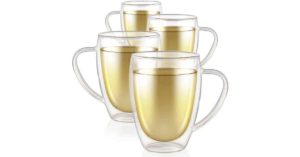
What materials are toxic in tea kettles?
The chemicals of concern for tea kettles are the following:
Copper
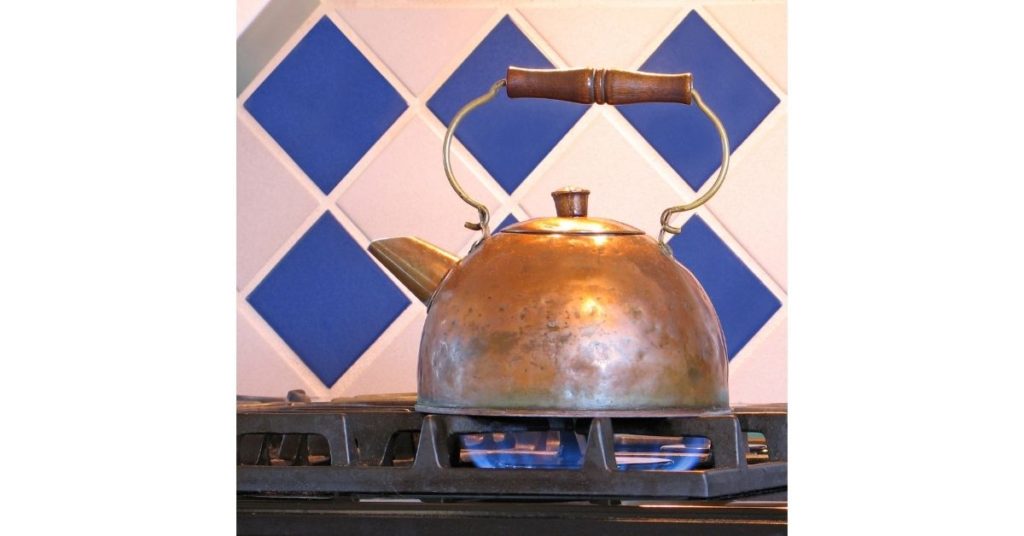
Copper kettles manufactured these days typically feature a lining of stainless steel so it should be safe to use if it’s a high quality/food grade stainless steel. What’s concerning is using copper without a lining, which includes many antique kettles. These should be used for decoration only. Consuming beverages from unlined copper kettle can lead to copper poisoning. Short term effects are gastrointestinal which includes nausea, vomiting, diarrhea, and abdominal pain. Long term effects could cause kidney, liver, heart, or brain damage.
Aluminum
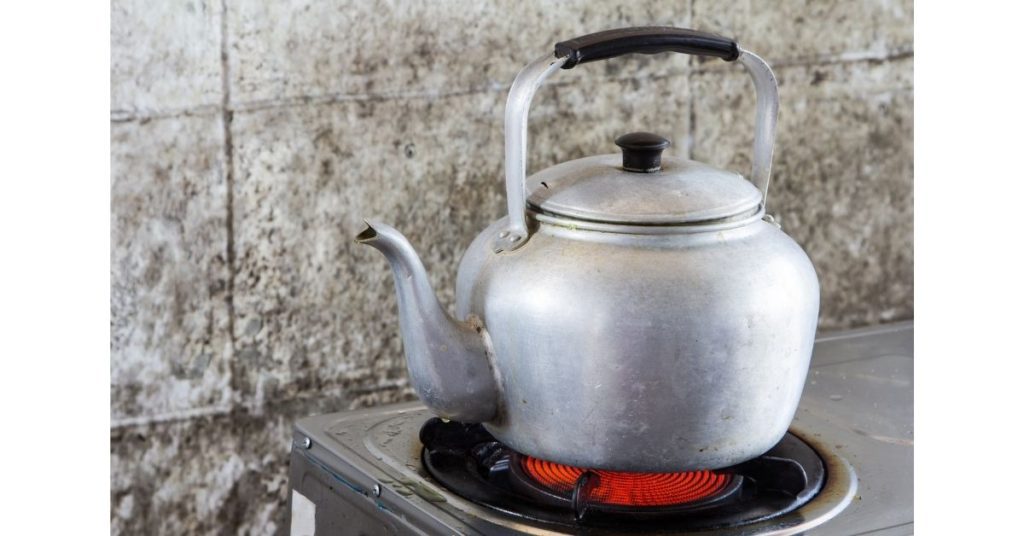
Elevated levels in drinking water can cause an elevated risk for Alzheimer’s Disease and Dementia.
Plastic
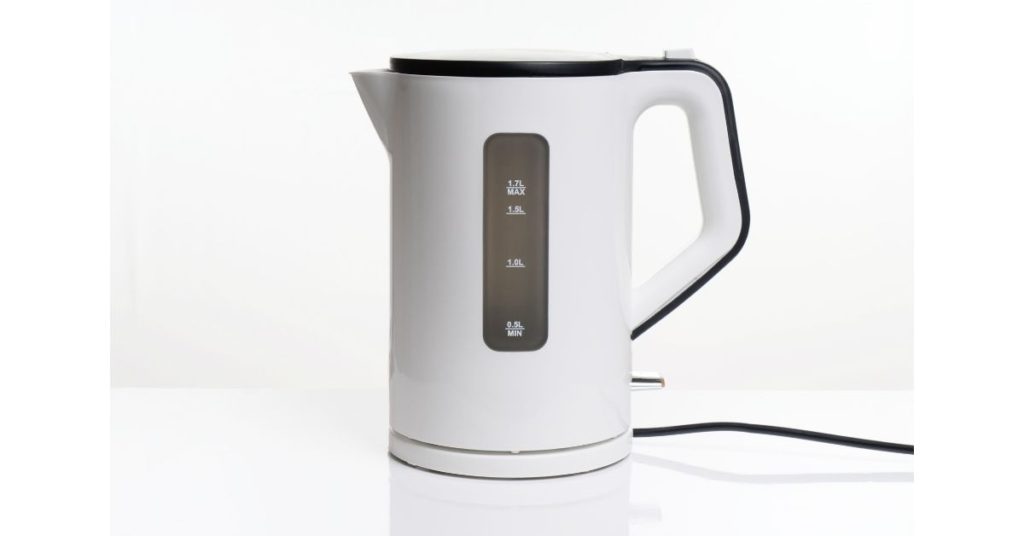
Heating plastic can leach unwanted chemicals like BPA in to your cup of tea which has negative health effects like being an endocrine disruptor. Even if a product is listed as BPA free, research is coming out that some of the BPA replacements are concerning as well. Plastics can also contain phthalates and you can read why it’s important to avoid this chemical in a previous blog post I created.
Porcelain Enamel & Ceramics
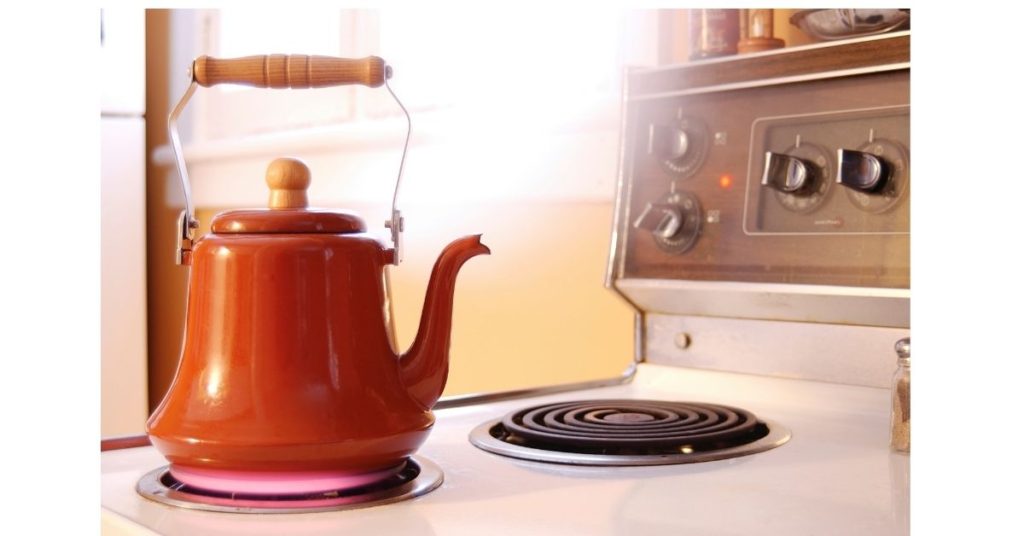
The concern with porcelain enamel and ceramics is the glaze could contain lead and cadmium and leach in to your drink. Lead can cause neurological issues especially with young children and it bioaccumulates so it adds up over time in the body. When pregnant women are exposed to high levels of lead it can cause miscarriage, stillbirth, premature birth and low birth weight. Cadmium exposure can cause prostate, kidney, and lung cancer. Birth defects, reproductive harm, and child’s development issues if exposed during pregnancy.
If you choose this type of tea kettle you should do you research since some are better than others. Choose those made in the USA since the FDA has more stringent rules about the amount of lead in products. You would want to make sure the company states the glaze used is lead-free, cadmium-free glaze, and you should discontinue use if the product is chipped.
Exposed Heating Elements
Heating elements inside tea kettles tend to be 80% nickel and 20% chromium. If the heating element is exposed then the metals will leach in to your water. Pubmed published a study and found 10 out of 26 kettles sold in the Danish market leached nickel in to the water.
The study MDPI published titled Nickel: Human Health and Environmental Toxicology states this:
“It is also noted that kitchen kettles may release nickel into drinking water when it is boiled in kettles with nickel-plated elements”
MDPI
European Food Safety Authority (EFSA) notes the following negative health effects from nickel exposure:
- “Oral exposure to nickel is not known to sensitise, but nickel may elicit eczematous flare-up reactions in the skin (SCD) in nickel-sensitised individuals following oral ingestion.”
- “From the small number of studies published since the previous opinion, a few suggest that there may be an association between nickel exposure and adverse reproductive and developmental outcomes.”
What is the safest tea kettle material?
When looking at the current options in the market place, the safest tea kettle options to limit your exposure to materials leaking in to your drinking water are high quality/food grade stainless steel and borosilicate glass.
Borosilicate Glass Tea Kettle
Borosilicate glass is your safest non-toxic team option for boiling water since it does not leach chemicals into your water. It’s better than tempered glass for tea kettles because it can withstand different temperature changes which reduces the risk of it breaking. However, I still I do get concerned about glass and having it break while it’s boiling since I’ve read this happening to people when looking up reviews. You would also want to ensure there are no painted logos or measurement markings on the kettle since the markings could have lead or cadmium.
High Quality/Food Grade Stainless Steel Tea Kettle
You will see numbers associated with the stainless steel option you choose. The most common is 18/8 which is 18% chromium and 8% nickel. I’m not finding studies of stainless steel leaching in to boiled water, there are studies of it leaching in to acidic food so that could apply to beverages too . If you are allergic to nickel then you should avoid stainless steel. There are stainless steel types that have less nickel like 18/0 however the product would then be more likely to rust.
Best Non-Toxic Tea Kettles
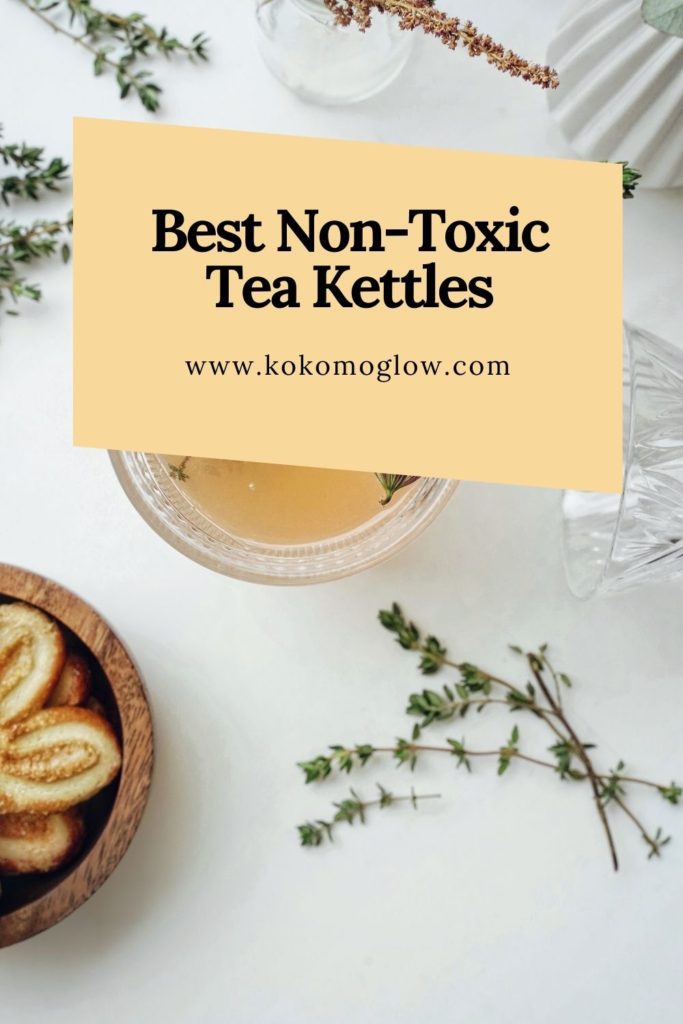
The options I would use are borosilicate glass electric kettle with stainless steel bottom, borosilicate glass stovetop kettle, or stainless steel stovetop kettle where the water does NOT come in contact with plastic (like the spout).
Here are the best non-toxic tea kettles I found:
ASCOT Stainless Steel Electric Tea Kettle

This tea kettle has the same features as above but instead of glass, it’s all stainless steel on the inside. Here are the features I liked about the ASCOT Stainless Steel Tea Electric Tea Kettle:
- Materials: Stainless steel
- No plastic comes in contact with the water. Product description on Amazon notes “all plastic is 100% BPA free and does not touch the water to provide healthy water for your family”
- Auto shut off feature
- Boils quickly: 10 cups in 3 -4 minutes
- Simple and visually appealing design
- High ranking reviews
- Customer service and satisfaction guarantee. Product description on Amazon notes “No-Risk Purchase – Ascot offers unconditional 12 months quality assurance to offer you a risk-free purchase. We offer 24/7 customer service and give you a satisfied solution in 12 hrs.”
Cosori Electric Gooseneck Pour Over Stainless Steel Kettle

If you like pour over coffee or want more control while pouring water in to your tea glass or teapot, then the Cosori Gooseneck Pour Over Kettle is for you! Here are the features I liked:
- Materials: Stainless steel
- No plastic comes in contact with the water
- 5 temperature presets for your perfect cup of tea or coffee
- The gooseneck spout makes pouring precise and helps control the flow of water
- Boils water in 3-5 minutes
- Auto shut off feature
Teabloom Classica Glass Teapot with Removable Infuser
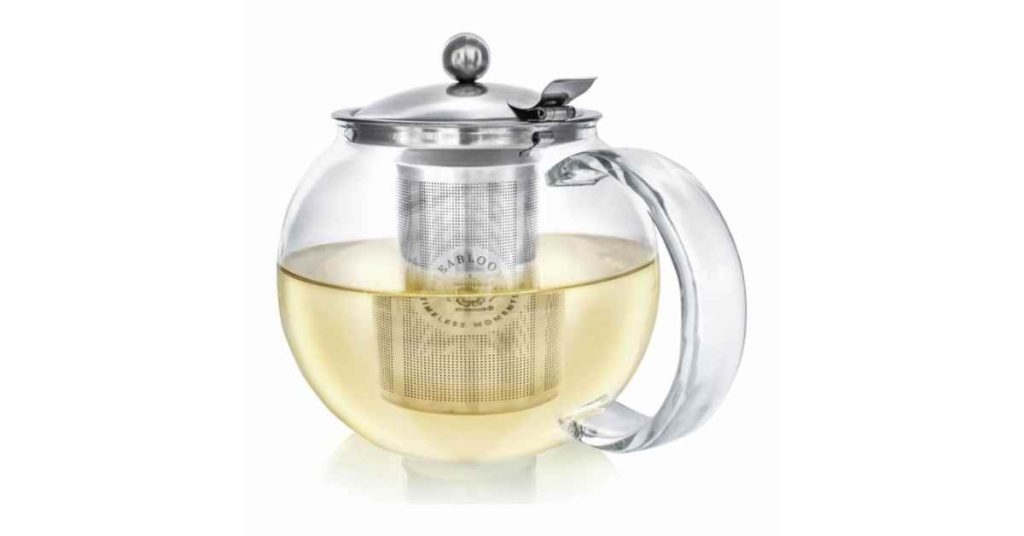
Teabloom reached out to me awhile back about being an affiliate for their product. I hadn’t heard about them before which is surprising since I love borosilicate glass and stainless steel materials, TEA, and non-toxic living…. and that’s what Teabloom is all about! I received a sample of the Teabloom Classica Glass Teapot and so far I am loving it! I must admit I still get nervous using it on the stove for fear of breaking, so I keep a constant eye on it and turn down the heat right when it reaches a boil. So far so good! What I really love is being able to heat up water in this pot using the microwave when I want multiple tea servings (time for a tea party)! Here are the features I liked about the Teabloom Classica Glass Teapot:
- Materials: Borosilicate glass container and stainless steel lid, there is NO plastic
- Multi-functional: You can boil water on the stovetop, you can boil water in the microwave, you can steep tea using the infuser or tea bags, you can make infused “spa” water (with cold/room temperature water just throw in some cucumbers or fruit)
- Easy to clean
- Simple and elegant design
- One year warranty if you register your product
- It’s a great price compared to other options
- Please note:
- The lid is difficult to get off when first opening (instructions state you can change the fit with a needle nose plier). So when I was first taking it off I unhinged the lid from the rest of the pot. If anything like this does happen to you, Teabloom offers a one year warranty so please be sure to register your payment right away (instructions are sent in the package) so you are covered in case you have any product issues like I did.
- The handle gets HOT so you need to be careful and use a hotpad.
- You need to remove the stainless steel parts when using the microwave, and stainless steel infuser when using the stove.
All Clad Stainless Steel Tea Kettle

I love All Clad products, and this is one of my top options if you are looking for a tea kettle. Here are some product features:
- 18/10 stainless steel material
- Polished finish that looks great in the kitchen
- Makes a whistling sound when water is boiling
- Dishwasher safe
- Very highly rated on Amazon
OXO BREW Stainless Steel Classic Tea Kettle

People all over the internet recommend this product as the best stainless steel option for stovetop. Here are the features I liked about the Oxo Brew Stainless Steel Classic Tea Kettle:
- Materials: Seamless, high-grade stainless steel
- No plastic comes in contact with the water
- Silicone handle
- Loud whistle
- There doesn’t seem to be an aluminum layer between the steel. Product description and answered questions don’t mention aluminum.
- High ranking reviews, many people reviewing tea kettles list this as one of the top performing and non-toxic tea kettle options
Please note: You will need to be careful about cleaning though since it’s hand wash only, and some reviewers stated it rusted. The company does give specific directions on cleaning and removing rust for this tea kettle here.
Quickone Takei Fuefuki Whistle Tea Kettle

This product is made in Japan, many people call this out as an excellent tea kettle with great craftmanship. The product details don’t have a whole lot of information like the other choices so the features I call out are mostly based on customer reviews.
- Material: Stainless steel
- Quick to boil water
- Loud whistle (could be a pro or con depending on what you are looking for)
- High ranking reviews all over the internet, this is an Amazon choice product
- Made in Japan, many people noted wanting to find an option that wasn’t made in China because of material concerns
Please note: Sounds like the instructions received will be in Japanese, however there are pictures.
Final Thoughts
Currently there is not the perfect non-toxic tea kettle product in the marketplace. Glass is your best non-toxic option since it wouldn’t leech chemicals however there is always the risk of it breaking. Your next best option is stainless steel. Below is a summary of what I’ve found when researching non-toxic tea kettles.
- Purchase tea kettles made with these materials: Food grade stainless steel, and borosilicate glass. Stainless steel may leach nickel and chromium however there aren’t studies of it leeching in boiling water. Borosilicate glass would not leech chemicals but could break if dropped (material is made to withstand heat changes).
- Avoid these materials because of the negative health risks: Unlined copper, aluminum, plastic, porcelain enamel, ceramics, and exposed heating elements in electric tea kettles
- Other tips:
- If the tea kettle has plastic elements then make sure it does not come in contact with the water.
- Avoid brightly colored enamel coatings, and those labeled as non-stick coating.
- If you are just doing single servings, using the microwave to heat up water in a cup is another way to not leach chemicals in to your drinking water. Just make sure you are using glass cups like my favorite mason jars.
For myself, I’m going to continue to microwave my single cup water in the microwave. When I do purchase the tea kettle it will be one of the options above, and I’m going to do a water quality test. So after I boil the water and it cools down I will use test strips to compare the water quality before and after to ensure checmicals weren’t leached in to the water.
Let me know if you found a favorite non-toxic tea kettle option!
Cheers,
Brekke Jo

